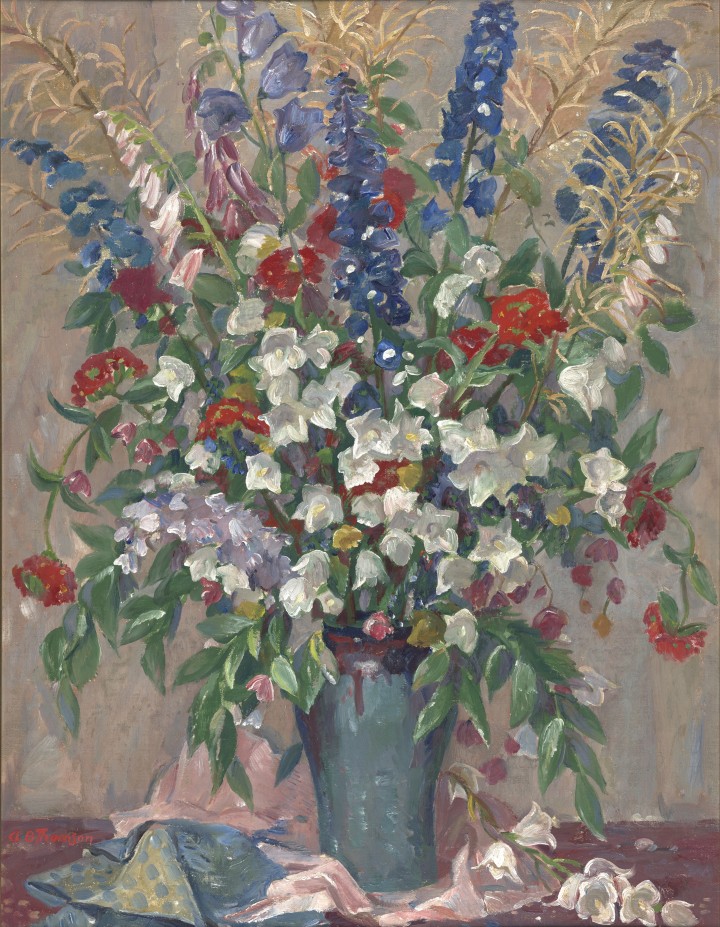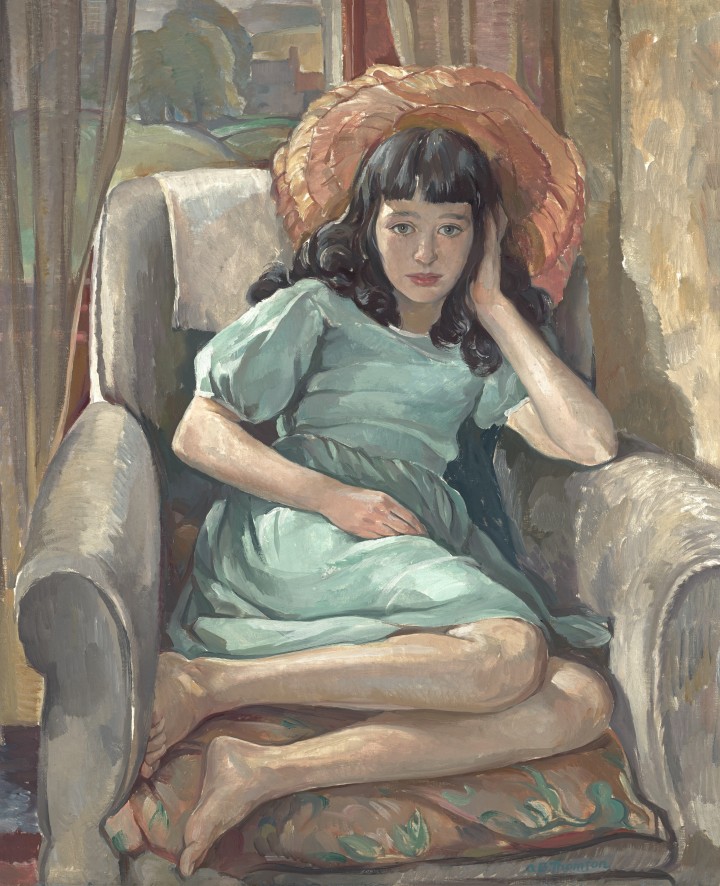Scottish Art News
Latest news
Magazine
News & Press
Publications
Adam Bruce Thomson: The Quiet Path
By Helen Scott, 26.08.2024

The Edinburgh School is a nebulous concept at the best of times. It was never a formal group or organised movement, but rather a loose network of Edinburgh-based painters who shared common traits. They all studied in the early decades of the 20th century at Edinburgh College of Art, where many of them later established careers as influential tutors.
 Adam Bruce Thomson, The Road to Ben Cruachan, c.1932. Private Collection. © the artist's estate
Adam Bruce Thomson, The Road to Ben Cruachan, c.1932. Private Collection. © the artist's estate
Artistically, they were linked by their preference for landscape and still-life subjects and their expressive treatment of colour and line, as well as their tendency to work in both oils and watercolours. William Gillies, Anne Redpath, John Maxwell, William MacTaggart and Robin Philipson are names that usually spring to mind. Yet there are others associated with the Edinburgh School who, despite making significant contributions, have received noticeably less attention over the years: Adam Bruce Thomson (1885–1976) is one of those artists.
Born in Edinburgh in 1885, Thomson undertook his artistic training in the city. He began by studying architecture at the Trustees’ School of Art on the Mound, but gradually shifted his focus towards fine art disciplines. In 1908 he transferred to the newly established Edinburgh College of Art, where he received diplomas in both Architecture and Drawing & Painting. Travelling scholarships subsequently funded sketching tours around England, France and Spain. Upon his return to Scotland in 1910, he became a tutor at ECA.
 Adam Bruce Thomson, Flowers, c.1940. Private Collection. © the artist's estate
Adam Bruce Thomson, Flowers, c.1940. Private Collection. © the artist's estate
Thomson remained on the college staff for another 40 years, instructing and inspiring successive cohorts of students, teaching a variety of subjects, from etching and elementary drawing to still life and colour theory. William Crozier, William Wilson, Wilhelmina Barns-Graham and Elizabeth Blackadder all benefited from his tuition. Although he had a reputation for exacting standards, he was ever-supportive of young talent. Staff and students alike knew him affectionately as ‘Adam B.’
In his own artistic practice, Thomson worked across a broad range of media, mastering printmaking techniques, drawing in pastels, and painting in oils and watercolours. His subject matter was similarly diverse, spanning portraiture, still life, architecture and landscape themes. Among his best-known works are panoramic depictions of Edinburgh’s Old Town and evocative scenes of the north-west Highlands, with its spectacular topography and changeable weather conditions.
He was versatile and prolific, exhibiting widely and well-respected by his peers. For decades he served as a dedicated member of various artist-led organisations including the Royal Scottish Academy, the Society of Scottish Artists and the Royal Scottish Society of Painters in Watercolour. Even after his retirement from teaching in 1950, he continued to maintain an active role providing advocacy and advice in artistic circles. In 1963 he received an OBE for his service to the sector.
 Adam Bruce Thomson, Mary, 1936. Private Collection. © the artist's estate
Adam Bruce Thomson, Mary, 1936. Private Collection. © the artist's estate
During his lifetime, Thomson was considered a key figure within the Edinburgh School. Today, however, he is something of an art historical footnote. There are many reasons for this, but his personality is a factor. Despite his considerable talents and achievements, Thomson was always a modest individual who was reluctant to promote himself over others. He was content for more ambitious contemporaries to take centre stage, which over time has had a marginalising effect on his legacy. As a result, his contribution to 20th-century Scottish art is largely unexplored.
 Adam Bruce Thomson, North Bridge and Salisbury Crags, c.1934. City Art Centre. © the artist's estate
Adam Bruce Thomson, North Bridge and Salisbury Crags, c.1934. City Art Centre. © the artist's estate
This summer the City Art Centre in Edinburgh invites visitors to rediscover Thomson afresh. Adam Bruce Thomson: The Quiet Path is the first major showcase of the artist to take place in a public gallery, presenting over 100 artworks from public and private collections, complemented by historic photographs and rare archival material. The exhibition charts Thomson’s extensive career and stylistic development, from his early student compositions to the atmospheric landscapes of his maturity. More importantly, it celebrates his vital role as a teacher, friend and mentor to other artists.
Helen E Scott is the author of Adam Bruce Thomson: The Quiet Path, with a foreword by Sir Alexander McCall Smith CBE, published by Sansom & Company
Adam Bruce Thomson: The Quiet Path is exhibited until 6th October at City Art Centre, Edinburgh




